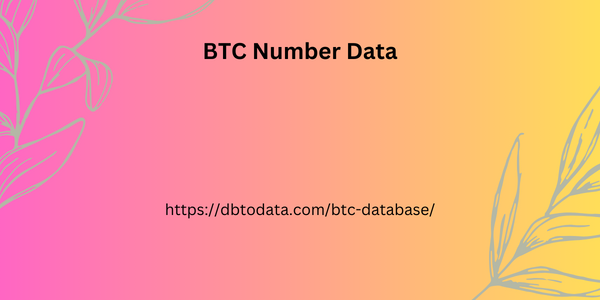Post by account_disabled on Mar 5, 2024 22:40:51 GMT -5
These signs, individually or cumulatively, do not constitute the minimum materiality to justify the initiation of cartel investigations in the fuel sector, depending on the characteristics of the segment itself (in particular, the homogeneity of the product and the transparency of prices, as per regulatory determination). .
It should also be noted that the National Petroleum, Natural Gas and Biofuels Agency (ANP), when asked to comment on cartel conduct in specific cases, in its analyzes always examines the behavior of average resale and distribution prices , the average nominal gross resale margin and the coefficients of variation of fuel resale and distribution prices for a given period.
However, assuming price homogeneity as sufficient evidence of a cartel, without considering other elements present in the competitive dynamics of fuel resale, may be a mistake, generating unnecessary investigations. As several BTC Number Data factors affect price dispersion, it is difficult to accept the establishment of an arbitrary value for the coefficient of variation as an indication that the market presents signs of a cartel, as does the methodology used by the ANP. two
On the other hand, within the scope of the SBDC itself, some economic filters are commonly used to investigate possible cartelization, in a given fuel resale market, through the observation of three basic data: (i) the evolution of the margin of resale from the municipality over time; (ii) the relationship between the evolution of this margin and price variability; and (iii) the evolution of municipal variables compared to state average variables.
The analysis of the evolution of the resale margin seeks to observe whether, in the municipality where the alleged cartel occurred, this margin shows an increase over time. It is expected that, in a cartel situation, at the very least, the margin will not show a reduction, that is, that the margin will remain relatively stable or increase. The finding that the margin is reducing over time is an indication that there would not be a cartel in the fuel resale market analyzed.

The second element considered is the linear correlation between the resale margin and the coefficient of variation of resale prices. There will be an element pointing to the existence of a cartel when this correlation is negative, as a successful cartel situation reflects an increase in margin and a greater adherence to the agreed price (and, consequently, a lower price variation coefficient). A contrario sensu , there is no evidence of a cartel if the correlation is positive, since this would reflect competitive behavior on the part of the market (ie, an increase in margin that is followed by an increase in price dispersion).
Finally, the third element observed is the comparison of the evolution of the margin of the municipality, in which the cartel would exist, and the average margin of the respective state. To this end, the linear correlation coefficient between these margins is calculated. If the estimated value for this correlation is positive, there is a linear association between the municipal and state margins. This means that, when the municipality's margin rises, the state's margin is also rising, which is not considered evidence of a cartel.
However, even if a comparative price analysis is carried out, such as that carried out by the ANP, or even if the filters mentioned above are used, CADE has decided that the existence of an evidentiary plus is essential for the penalization of cartel conduct. . It is therefore not enough to analyze prices without any proof of agreement between competitors.
